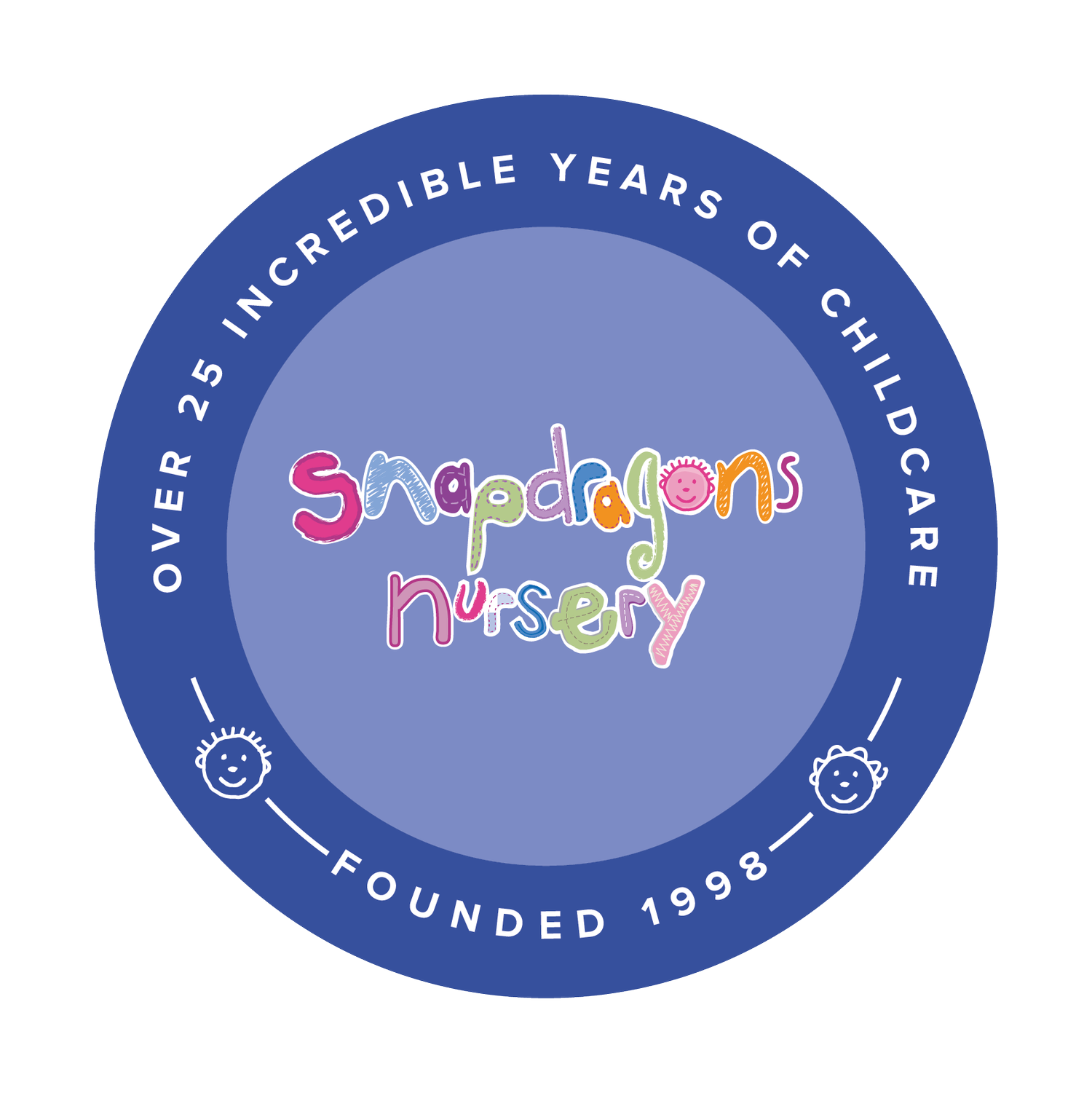
“Fee Fie Fo Fum!” - Traditional Tales at Snapdragons
Each month we focus on a well loved story as we believe that storytelling and a love of books are vital in providing a firm foundation for our children’s communication and language development, and readiness for reading and writing.
The stories we have chosen include modern favourites such as The Very Hungry Caterpillar, Peace At Last and We’re Going on a Bear Hunt. We also like to focus on those enduring classic folk tales which we all remember from our childhood such as; The Three Little Pigs, The Three Billy Goats Gruff, and Little Red Riding Hood.
Our planning incorporates the story of the month, and many fun activities grow from the ideas sparked by the children’s interest and enjoyment in the story’s characters and events. Our children are currently exploring ideas surrounding “Jack and The Beanstalk” with cries of “Fee Fie Fo Fum!” resounding from every corner of our nurseries!
Activities include exploring the variety of different leaves in the local environment and using their creative skills to make leafy Beanstalks of their own. Beans have been planted in clear bags so the growth of shoots and roots can be observed. Story maps full of imaginative ideas have been plotted using drawing, early writing and mark making. Alternative versions of the story are being shared so the perspective of the Giant is considered and different feelings explored. Role play corners have giant sized tables, bowls and plates fit for a Giant. Construction areas are busy building castles, and magic beanstalks have sprouted and grown up through the ceiling in many of our playrooms!
Like so many of the traditional tales, the story of Jack and The Beanstalk has been passed down through the generations, surviving through storytelling. Jack and the Beanstalk was recorded as “The Story of Jack Spriggins and the Enchanted Bean” and “Jack The Giant Killer” in the 17th and 18th century. However, research has now revealed that this story and other folk tales actually have much earlier origins than previously thought. Many have been traced back to more than 5,000 years ago!
The Giant has gone by many names over the years, including “Blunderbore”and “Gogmagog”, but his familiar cry of “Fee, Fie, Fo, Fum! I smell the blood of an English man” remains. This seemingly nonsense phrase is thought to be Gaelic in origin and has a meaning of disapproval and anger. “Fie, foh and fum, I smell the blood of a British man” features in Shakespeare’s King Lear.
Whatever the origin, it is repeated phrases such as this that enable children to remember and join in with the story with enjoyment. We like getting the children actively involved, getting up and becoming the characters, stomping like the giant or climbing the beanstalk as Jack. So with each of our traditional tales we encourage not only sharing the book of the story, but telling the story ourselves, carrying on this age old tradition, and hopefully our children will pass this down to their little ones one day too!
Natural Objects To Spark The Imagination
The way an activity is presented to the children has a powerful impact on its potential for learning. Skilled adults provoke children's interest and curiosity through the way they set up resources. This invites children in, leading them to become engaged and motivated, with opportunities to extend their thinking.
Initially a house was made with sticks, which then sparked her own recall of the snake’s log pile house from “The Gruffalo”.
A child entered into this activity, tempted in through the adult’s arrangement of a tree with bark and leaves, and a bird using circles of wood and sticks for a beak and legs. This was rooted in the children's interest in the different birds from our recent story focus of “Chicken Licken”.
As a variety of natural objects are available for exploration, presented in baskets for the children to select freely, this enabled her to build upon and develop her own ideas in the following ways.
Leaves were used for the fox’s den, it was important to her to provide him with some of these leaves to use as a blanket.
The owl’s house was created using bark pieces placed to form a large tree with spreading branches.
Shiny stones were selected and lined up to mark out the mouse house. Then finally, pine cones were carefully arranged for the Gruffalo’s cave, complete with a piece of bark stood up as his door.
The owl’s house was created using bark pieces placed to form a large tree with spreading branches.
These natural loose parts had been used by the child to create a complete story environment. A toy mouse could then explore and visit each of the character’s homes, retelling the story in her own way.
From an inspiring starting point, ideas evolved through the child’s own story knowledge and creativity. Freedom to select and arrange these natural objects gave the control to make her own choices and decisions. The open ended nature of this activity gave her the opportunity to use objects to represent the features of a story she knows well and remain motivated through her own interests.
This activity was an effective context in which she could use her communication skills to express her ideas. Also physical and mathematical experience was gained through manipulating and arranging the objects carefully. Access to this variety of natural materials also increases understanding of the world around us.
All this learning and imagination from such simple resources, and so much fun!












